LULA
Lula From Brazil
By Fernando Morais
In the Brazil in which Lula was born, in 1945, his chances of surviving and reaching adulthood with formal education and a decent job were minimal, almost nonexistent. Out of every ten children born in the country’s Northeast, two died before they reached one year of age. He survived; as he would survive the drought, the plantation and the hunger, the three plagues that ravaged the region.
In the world where Lula was born, Brazil’s destiny was conditioned to the interests of the American side of the Cold War. It was a country with half its population isolated in rural areas and 56% illiteracy (over 70% in the Northeast). The old fashioned upper class lived off their income from agriculture and finance, sternly combating everyone who dreamed of a developed and socially just country.
Lula’s life is intertwined with the struggle of a whole generation of Brazilians which challenged that destiny. While still a child he traversed, with the mother and siblings, the long way from Garanhuns to the São Paulo coast, where they would meet other plagues: unemployment, the favela, violence. And hunger always around the corner. They survived thanks to the obstination of Ms. Lindu, who taught her children to work from an early age and to share solidarily the little each of them earned.
Lula was a young factory worker when the military seized power in the country, in 1964. In the following years, working at the heart of Brazilian industry, Lula started his political apprenticeship through the union movement – at a time when fighting for salaries and rights might result in prison, torture and death. Leading strikes oppressed by the dictatorship, he found that the workers needed to do politics as well, have their own party.
Since the creation of PT (Partido dos Trabalhadores – Workers’ Party), in 1980, Lula’s trajectory is well known. He built the largest party of the masses in the country, he ran and lost three presidential elections, and he challenged the discrimination, the powerful upper class and the media, to become, in October 2002, the first worker elected president of Brazil. In eight years in office, he proved it was possible to change the destiny of the country.
Here is the biography organized by journalist Camilo Vannuchi.

The First Years
JUNE/1935
Eurídice Ferreira de Melo, a.k.a., “Ms Lindu”, marries at age 20 to Aristides Inácio da Silva, age 22. The wedding is officiated only at a church, being kilometers away from the nearest city hall, and celebrated with accordions and fireworks at the Cajaranas ranch, in Caetés, which was then a suburb of Garanhuns, in the countryside of the state of Pernambuco. The couple had known each other since forever. Their families are neighbors, and they follow the custom of their children marrying the other family’s children, at a time when few country people left their village, only doing so to buy supplies at the nearest town. The farmer’s market is in Garanhuns, where Aristides, by horseback, buys salt, sugar, kerosene and soap with the scarce money he obtains selling cassava flour to a local mill. A subsistence farmer, the husband provides corn, cassava and beans to Lindu’s kitchen. Every once in a while, a chicken, a pig or some game meat, thanks to Aristides’ sharp shooting.
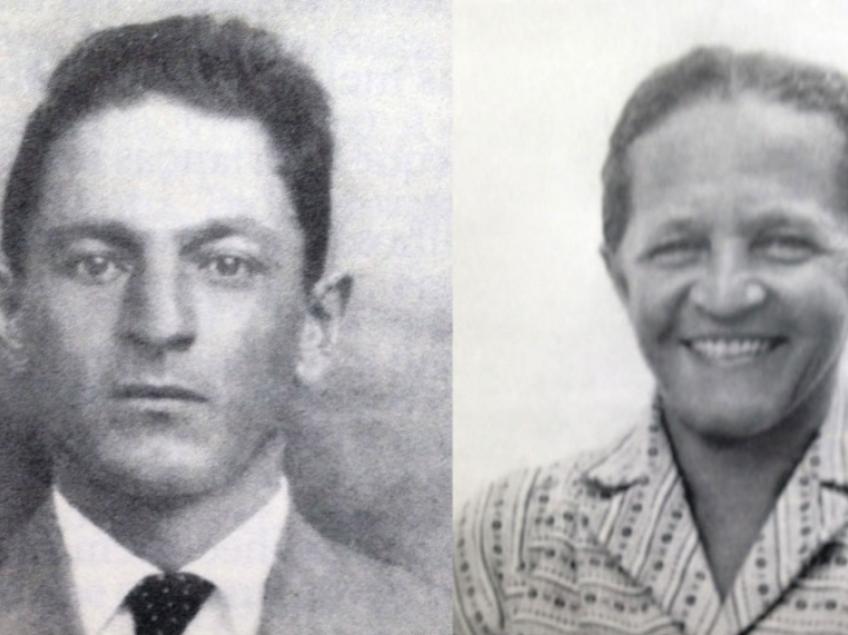
SEPTEMBER / 1945
Ms. Lindu and Aristides live at the Vargem Comprida Ranch, in Caetés. The Pernambucan countryside is punished by the worst drought since 1932. Another one that severe would only be seen at the state in 1951. With the crops lost, and almost without food and water, Aristides leaves the six children and the eight month pregnant wife, and migrates to try his luck in São Paulo. Without anyone in the family knowing, he takes along Ms. Mocinha, a cousin of Ms. Lindu, only 15 years old. She is also expecting a child of his. Aristides would soon find a job as a Coffee bag loader (these being 60 kg, 130lb, jute bags of coffee beans) in a warehouse in Santos, at the São Paulo coast, and he would be living with Mocinha in a wooden house in the Vicente de Carvalho neighborhood, in Guarujá (Translator’s Note: in Brazil, houses are normally made with masonry; wood is used nearly only by the very poor).
OCTOBER / 1945
Luiz Inácio da Silva is born at the Vargem Comprida Ranch, in Caetés. He is the seventh child of Aristides and Ms. Lindu. Labor and delivery happen at home, a humble construction with dirt floors and just two rooms: a living room and a bedroom. The children sleep in hammocks. The house has no tables, chairs, internal plumbing, or even a bathroom (inside or outside). Baths are weekly, in a streak six kilometers away.
JUNE / 1949
The first portrait of Lula is taken, at 3 years of age, alongside his sister Maria, two years his senior, at a studio in Garanhuns. The clothes and the sandals, larger than his feet, were loaned by the photographer. Lula did not have any shoes and would only have them by the time he was a teenager, in São Paulo.

JUNE / 1950
Aristides goes on his first trip to the countryside since his departure, in 1945. Lula is 5 years old and sees his father for the first time. Suspicious, he asks his mom: “Who is this man?”. Before returning to Santos, Aristides gets Ms. Lindu pregnant again. This time, he takes with him the son Jaime.
DECEMBER / 1952
In December, Ms. Lindu gathers her children, sells the house and the few belongings, and embarks in a pau-de-arara (a makeshift transport for rural workers, in the cargo area of a flatbed truck) towards São Paulo. They only went that way thanks to a prank by Jaime. Aristides, who was illiterate, dictated to his son Jaime the letters for his wife. In one of them, he said that life in Santos was difficult and she should stay in Pernambuco. The son wrote the opposite. Writing for Aristides, he instructed the mother to sell everything and leave Pernambuco to join him in Santos. The family follows the migration flux that was predominant at the time, towards the states of the Southeast, which were quickly getting industrialized. Thousands of migrants would repeat the same route in the following decades, running from the climate and the lack of perspectives in their home land, lacking not only rainfall, but most importantly, investment. In January 1952 alone, 23 thousand Northeasterners went to São Paulo. The trend would only decrease by the 2000s when income distribution policies and the creation of jobs, headed by then president Lula, resulted in IBGE (Brazilian Institute for Geography and Statistics) recording, in 2010, a movement of population retention, and also a return of Northeasterner migrants to their states. As it happens, the one which received the most returns at the time was Pernambuco. After a 13 day trip, squeezed in the truck with other migrants, the family arrives at Brás, in São Paulo, and continues on to Santos. A boat finally takes them to Vicente de Carvalho, where they meet Aristides and Jaime. Surprised, the father does not demonstrate happiness when encountering the wife and children. On the contrary, he becomes upset when noticing the family dog Lobo was left behind.
“My father was a profoundly ignorant man. One day, in 1952, my sister was about three, I saw my father eating bread and my sister asking for a piece. My father would take little pieces of bread and throw them to the dogs. He did not give it to her. That marked me profoundly. At the time I was about eight or nine.”
AUGUST / 1953
At age 7, Lula starts working as a street vendor next to his brother Ziza (nicknamed Frei Chico as an adult), three years his senior. Peanuts, tapioca, oranges… Shy, he was embarrassed yelling “Oranges!” at the Santos port. He ended up becoming a shoeshine downtown.
MARCH / 1954
Lula attends school, Grupo Escolar Marcílio Dias, hidden from his father. Aristides had forbidden the kids from studying and playing. Only work was allowed.
OCTOBER / 1955
Tired of Aristides’ alcoholism and rudeness, who physically beat the children, Ms. Lindu left her husband and the house with her children. The final straw was the day when Aristides beat her with a water hose, and then moved on to punish Lula as well. Ms. Lindu stood in front of the youngest child, then 9 years old, to shield him from her husband. She ended up being beaten with the hose. It was the first time she felt on her own body her husband’s fury, and she would not take it again.
“We did not have a child’s life. We could not play or have fun. Separation was a cry of freedom by my mother”.
AUGUST / 1956
Lula moves to São Paulo and his family settles in Vila Carioca, a working class neighborhood in the Ipiranga area. They live behind a bar, being rented by an uncle, with the bathroom shared with customers. There is no pavement, or sidewalk, running water, table or chairs at the home. Not long after that, the brothers find jobs and the family rents a masonry house, also in Vila Carioca. During the rainy seasons, the house gets flooded.
MARCH / 1959
After working as a street vendor, shoeshine, errand boy and helper at a dry-cleaner’s Lula gets his first formal employment at Armazéns Gerais Columbia. With the same shyness that kept him from yelling “Oranges!”, Lula is at a loss for words, gets nervous on the phone and fumbles when passing on messages. He is fired. His greatest pleasure is to play soccer. Or go to the movies, when he could borrow a jacket.
SEPTEMBER / 1960
At age 14, Lula gets employment at the Marte Bolt Factory, where he gets his first salary as a metal worker: half the minimum wage. At this job, he gets the chance to sign up for technical classes at Senai (a Brazilian network of industrial technical schools). Lula is not interested in going to the first test, for the foundry course, but goes to the second, for machine shop work. He passes. For three years, besides learning that profession, he would have the regular high school classes, including Physical Education, which provided basketball and soccer matches, to his delight. Lula starts playing soccer also on Sundays, assembling an amateur team with his colleagues, joins Senai’s cultural activities, and soon becomes the best paid of Ms. Lindu’s children, taking over a large share of the household expenses. The six months of internship required by his technical classes are done at the Marte Bolt Factory, where Lula worked for three and a half years and where he met the one who was his master with the lathe, Old Man Barbosa.
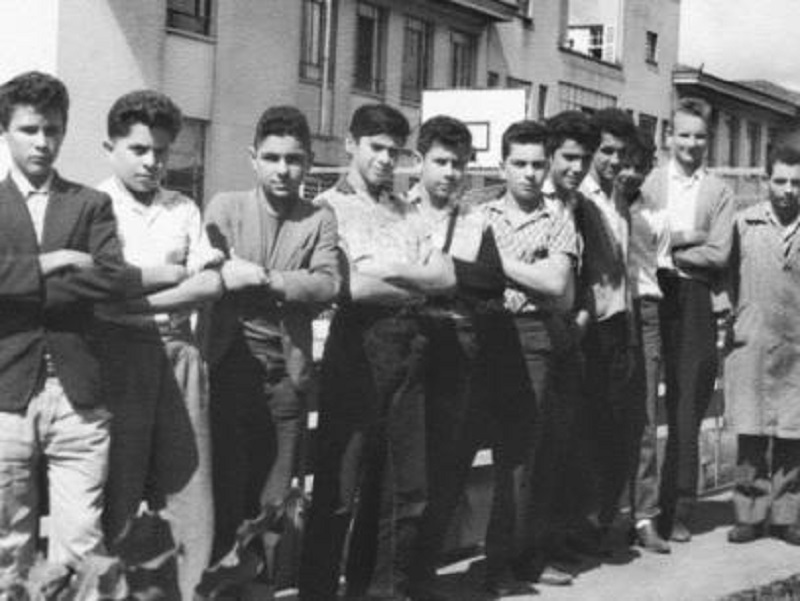
MARCH / 1962
While employed at Metalúrgica Independência, at age 18, Lula operates the lathe in the night shift, often working from 7pm to 7am. Working more overtime than legally allowed was common practice at the factory. In one of those occasions, at around 2am, a bolt broke in a press and Lula went on fixing it. At the moment he was replacing the part, the press worker fell asleep and let go of the press handle, causing it to come crashing over Lula’s left hand, crushing his pinky. Lula had to wait until 6am with his hand wrapped in rags for his boss to arrive and take him to the Monument Hospital, which was in the network of the national public health system at the time. The finger is surgically amputated. That mishap was no exception. In a country where work safety norms were rarely followed, many workers were mutilated, as if that was the price to pay for industrialization. For that accident, Lula gets paid 371 thousand Cruzeiros in compensation, equivalent to around 15 thousand Reais (6 thousand US dollars) in 2014 values. Lula keeps working normally at the factory.
DECEMBER / 1962
Lula graduates at Senai. For the graduation ceremony, he wears a tie for the first time.
“I wish I could have gone to college. I would like to have been an economist, but it was not possible. I do not feel sorry for myself. The essential I have, which is the ideological commitment.”
JANUARY / 1963
João Goulart, who had inherited presidency after Jânio Quadros resigned, in 1961, is finally able to launch his administration plan, with a referendum passing the return of the the presidential system, supported by 90% of the population. Before that, in order to take office, he was forced by the military to accept a parliamentary system, which reduced his presidential powers. His agenda has a strong social theme, and it includes actions such as agrarian reform and nationalization of private companies in strategic sectors. The support from workers is proportional their bosses’ fear.
MARCH / 1964
The coup d’état that would keep the country for 21 years in a dictatorship takes place. Supported by the US and most of the corporate press and the tradicional politicians, the maneuver is justified as a necessary measure to keep at bay the ghost of communism – which, according to the military and to civilians favorable to the coup, were prowling about João Goulart’s progressive administration. In the new regime, some congress members would be banned, some political parties would be terminated, public officers would be appointed by the federal government and censorship would be implemented over newspapers, radio and TV stations.
Lula gets into an argument over salary and leaves Metalúrgica Independência after 11 months in the job. He is hired at Fris Moldu Car, a machine shop where he works for six months and from which he is fired for not showing up at work on a Saturday, having preferred to spend the weekend at the beach.
JUNE / 1965
The recessive Brazilian economic policy adopted by the military regime causes Lula to spend more than a year unemployed. He roams from factory to factory, always on foot, without money for transport, and always hears the same answer: “No openings”.
“Sometimes, I stopped on the way and cried a lot. Because one loses perspective. I did not have a lot of responsibilities because I was single, but I imagined the situation of a married man.”
JANUARY / 1966
Lula is hired at Indústrias Villares, in São Bernardo do Campo, one of the most solid machine shops of the time. São Bernardo is one of the cities that make up the region known as ABC, in the São Paulo metropolitan area, where some of the largest factories in Brazil can be found, mostly machine shops, particularly car factories. At the end of the 1970s, São Bernardo had 210 thousand inhabitants, and the neighboring Diadema, 90 thousand. Together, the two had no less than 130 thousand factory workers, almost one in every two adults. Volkswagen alone had about 40 thousand employees.
JUNE / 1967
Led by his brother Frei Chico – nickname given by his friends due to his Franciscan style baldness pattern -, Lula visits for the first time the São Bernardo do Campo and Diadema Metal Workers Union, then headed by Afonso Monteiro da Cruz. He says he considers union politics too boring, with unnecessary arguing, so he would prefer to stay at home watching soap operas. The main themes being debated were assistentialist, such as constructing vacation villages and improving the medical department. From the next year on, the so-called “economic miracle” would take place, when the recession would be replaced by inflated expansion thanks to foreign loans and the increase of foreign debt. Many ABC workers had good salaries and had a standard of living close to that of the middle class, and that demotivated the political movements, specially among Northeasterners, who were aware of how much worse life could be and who were afraid of losing their jobs. After watching the first assemblies, however, Lula starts to become enthusiastic about the disputes and the heated debates among good speakers. Now, he felt as if he was watching a soccer match.
“I just wanted to be a good professional, earn my salary, live my life. Have kids. None of this union leadership business crossed my mind.”

SEPTEMBER / 1968
Start of Lula’s trajectory as a union leader. Frei Chico, prevented from disputing a place in the union board because another worker from his factory (Carraço, which made truck chassis) was already a member, convinces Lula to join the union – his member ID is 25968 – and he nominates his brother to the ticket that would run for election in early 1969, headed by then second secretary Paulo Vidal. Lula is accepted because the other members believed that, like Frei Chico, he would also be connected to the then clandestine Brazilian Communist Party (PCB) – which, in theory, would guarantee the support from the workers siding with the “big party”.
Union Leader
APRIL / 1969
Lula joins with the ticket that would win the election for the board of the union and takes office as second deputy on April 24th. Representing the union among its grassroots, he would keep working on the factory floor and acting inside Villares
MAY / 1969
At age 23, Lula marries Maria de Lourdes, his girlfriend since age 18. The ceremony is simple, at Ms. Lindu’s house, with a barbecue and guaraná(a Brazilian soft drink). The couple departs for honeymoon in Poços de Caldas, in the Minas Gerais state. Lourdes is the sister of his best friend, Jacinto Ribeiro dos Santos, nickname Lambari.

A year and a half after the marriage, Lourdes announces she is pregnant.
MAY / 1971
Seven months pregnant, Lourdes falls ill. Lula roams through a series of public hospitals trying to get her admitted. In vain. Anemic, suffering from hepatitis and negligence from the doctors who would resist admitting her, Lourdes dies during an emergency C-section. The baby, a boy, also does not make it.
“Those with money can do anything; those without it can do nothing, have no established rights. As Lourdes died, millions of others die, around the country, without basic medical care.”
AUGUST / 1972
Suffering from depression since the deaths of the wife and son in the previous year, Lula dives into union activities to overcome that moment. He moves to São Bernardo do Campo. At Villares, he starts to intervene in the negotiations with the bosses and shows skill for that.
For the first time since the Senai classes, Lula leaves the factory floor, for an office at the union. He again joins with the ticket that would get re-elected for the union board, not as second deputy anymore, but as first secretary. He runs the legal department and answers for the recently created social security department.
APRIL / 1973
Lula emerges from the mourning, more extroverted and dating more. A widower, living again with his mother, he starts going to clubs and bars almost nightly, after leaving his work at the union. He briefly dates Miriam Cordeiro, and, a little after that, meets Marisa Letícia Casa, a widow like him, and mother of Marcos, a 2 year old boy. Lula is in love for Marisa when he hears that his former girlfriend is pregnant.
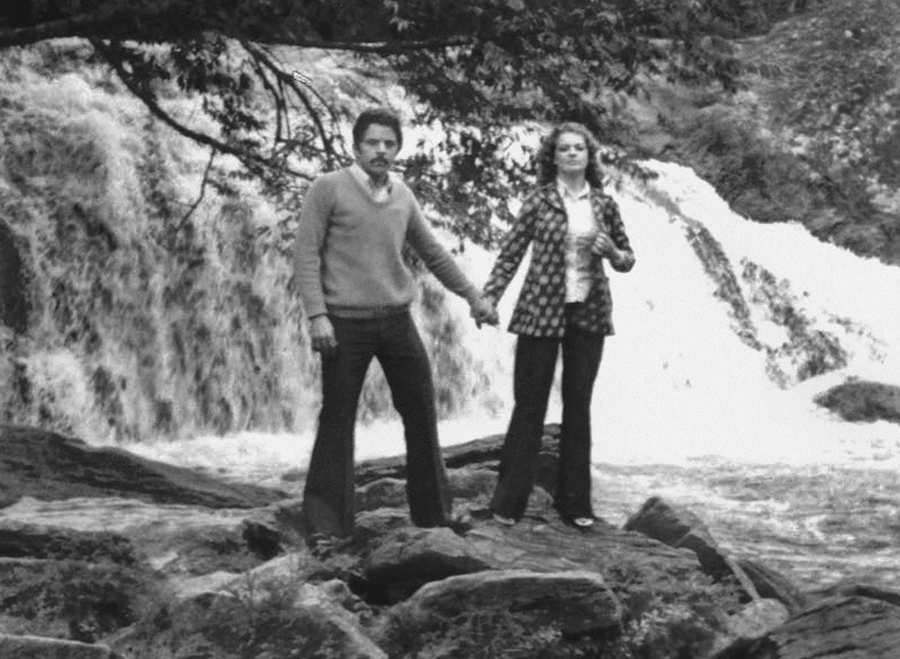
MARCH / 1974
Lurian Cordeiro da Silva is born, his daughter with Miriam Cordeiro. Lula promptly takes responsibility for the girl, as opposed to claims by the Fernando Collor de Mello campaign, in 1989, in an attempt to tarnish his image.
MAY / 1974
Six months after meeting, Lula and Marisa marry at the city hall. They spend the honeymoon in Campos do Jordão. Lula would officialize adopting Marcos, his foster son, when the boy was 10.
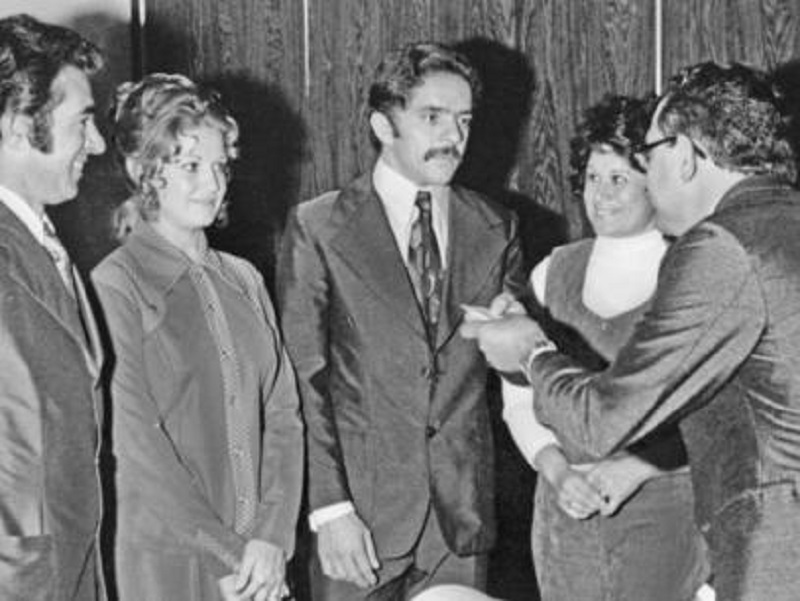
FEBRUARY / 1975
In a new election, Lula becomes president of the union, with 92% of the votes, and takes over the challenge of leading a huge member base, with around 100 thousand workers and in fast growth. Popular and a good negotiator, Lula is supported by metal workers from varied political preferences. The support of the previous president, Paulo Vidal, who joined his ticket as secretary-general, was essential for his election. Since Lula was a terrible speaker, Vidal expected that, in practice, he would stay in charge. At his inauguration, Lula reads a speech in which he criticizes both capitalism and socialism, any regime that might curtail the citizens’ freedom, something rare in those Cold War times.
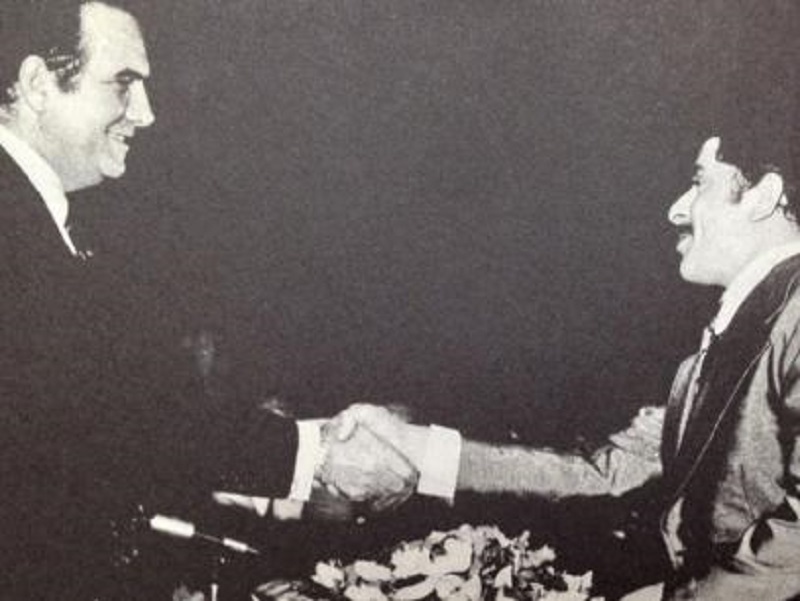
MARCH / 1975
Fábio Luís, first son of Lula and Marisa, is born nine months and nine days after the wedding ceremony.
OCTOBER / 1975
Lula goes on his first overseas trip, when he was invited to participate in a Toyota conference in Japan. While there, he hears that his brother Frei Chico, connected to PCB, had disappeared: he was probably dead or imprisoned. Lula is advised not to return to Brazil, due to the risk of being killed by the regime’s repression. Lula ignores the advice and returns to search for his brother. He goes to the II Army, to DOPS (TN: Department of Political and Social Order, one of the government’s agencies in charge of policing political opponents to the regime), and only a month later he learns the whereabouts of Frei Chico, who by then was being tortured at DOI-CODI (Brazilian Army’s intelligence and homeland security branch), at the same place where, just a few days earlier, one of its most famous victims lost his life: journalist Vladimir Herzog, killed under torture on October 25th. Over the 21 years of military rule, between 1964 and 1985, the repression would be responsible for at least 437 deaths and disappearances, according to the 2007 report by the President’s Special Department for Human Rights. His brother’s fate contributed for Lula to strengthen his opposition to the dictatorship and to stop being cautious with his words during the union assemblies.
“If I am to be imprisoned for what I think, so be it.”
FEBRUARY / 1978
Lula, with a mustache, appears for the first time on the cover of a national publication, the IstoÉ Magazine, interviewed by editor Mino Carta and reporter Bernardo Lerer. The interview contains thoughts such as “I would never join MDB or Arena (TN: those were the only two parties allowed then by the military regime) , they are both the same and both have the same objectives. Arena and MDB do not represent the working class. I am not interested in a party organized from the top down.”
“I will say openly that I am not compromised by anyone, and that the São Bernardo and Diadema union is one of the few independent organizations on this land. I am only committed to the workers who elected me. We will walk proudly while we can criticize you today and applaud you tomorrow, if there is reason for it, and without second thoughts. Unfortunately, there are many union leaders who are compromised.”
APRIL / 1978
Lula is re-elected union president, with 98% of the votes. Since his inauguration, he set a new and efficient way to involve the base. If the workers do not go to the union, the union will go to them – transferring the assemblies to the factory doors. Now, in his second term, Lula decided to replace the union’s traditional bulletins with materials that were more educational, including political cartoons and comic strips. The character João Ferrador (“João Blacksmith”) emerges, created by Laerte Coutinho, an iconic figure in the ABC union media.
Lula manages to bring the union movement to a new level of legitimacy. The new union movement that emerges in the ABC is simultaneously combative and independent. It is nothing like either the “peleguista” style, practiced by leaders more loyal to the employer’s interests than to the workers demands, nor the “aparelhista” style, marked by leaders controlled by political parties, which use the union as a tool to disseminate party doctrine and co opting votes, with no real identification with the workers’ demands.
MAY / 1978
The union organizes a large rally for the International Workers’ Day holiday. The main demand is for the salary raises to be above the rate determined by the government, and, also, that it recouped the losses due to inflation (TN: inflation rates in Brazil at the time were around 40% per year). The union did not call for a strike, as strikes were outlawed, but their leaders would leave that implicit in their speeches, in an attempt to convince the workers of the need for radical action.
Workers at Scania, a Swedish truck make with a factory in São Bernardo do Campo, punch in their time cards and sit down, unsatisfied with the insufficient raise they got on their paychecks from the 10th of the month. Almost 3 thousand metal workers join this strike, organized from inside the factory. Workers from other automotive factories join. Lula takes over negotiations at Scania and is able to reach a quite positive deal, with 15% raise above inflation. The example spreads through ABC, and then, to other cities in São Paulo state. Over 150 thousand metal workers would stop production while still showing up at their workplace. On the same day, the 12th, Lula learns about the death of his father. Alone, Aristides was buried by the city of Santos in a potter’s field. He had been abandoned by Mocinha and all his 24 known children.
“The salary squeeze caused the working class, after many years being repressed, to do as any working class in the world would do: deny their workforce to the corporations.”
Lula considers for the first time starting a political party. This happens after a trip to Brasília, in which Lula and other union leaders try to convince congress members to reject a bill that would outlaw strikes by professions considered essential. At that occasion, the group did not find support in any congressional caucuses. Among the 482 representatives, there were only two with a workers’ background: Benedito Marcílio, then president of the Santo André Metal Workers Union, and Aurélio Peres, from São Paulo, who had links to PCdoB (TN: Communist Party of Brazil, not to be confused with the Brazilian Communist Party, PCB). They needed 241 votes to ensure the right to strike. They were missing 239. Lula was even dismissed: “I do not need you, I am not from your land and I was not elected by workers”, a representative told him. This caused Lula to realize the urgency in electing politicians with a commitment to workers causes.
JULY / 1978
Lula’s son Sandro Luís is born.
DECEMBER / 1978
Despite being outlawed, over 400 strikes happen in the country over the year, many of them only in second semester, months after the disagreements and the manifestations of May 1st, the time usually associated with salary negotiations.
JANUARY / 1979
As the years begins, the union decides to prepare the workers in advance for a general strike, which would be capable of rattling the country. With the preparation, they would have more time to hone in their arguments and demands, and to better prepare for the activities in May.
“In this employer-employee relation, the only weapon that gets the working class truly respected by the employers is the strike”
MARCH / 1979
The general strike begins. Support exceeds expectations and requires the union leaders to transfer their assembly to the Vila Euclides soccer stadium, the only place in São Bernardo do Campo that can house the 80 thousand workers who show up in the afternoon of the 13th. Without a sound system, bullhorn or podium, Lula has to improvise. He climbs on a bar table placed on the center of the pitch, and delivers his speech with just his own voice, so that the nearest workers would hear him and repeat his speech to those further behind, and so on successively, until the message reached those in the most distant rows.
The strike is ruled illegal by the Labor Justice. Two days later, there were already 170 thousand metal workers on strike over the whole ABC.
Police cars surround the union building. The Department of Labor decreed an intervention, suspending the union’s elected board. Days later, part of the workers, tired and losing hope, gets back to work, weakening the demand powers of the union board.
Lula talks to the employers and proposes a 45 day truce, with immediate return to work after the end of the intervention, and the reopening of the Vila Euclides stadium, which had been closed for assemblies, payment for the stoppage days, no terminations, and, finally an 11% salary increase, as had been offered by the employers the year before.
At an assembly, Lula asks for a vote of confidence and exposes the conditions for the truce. “If at the end of this period our demands are not met, I will declare the return of the strike myself”, he says. After 45 days, the employers sign a deal with the union, but do not fulfill their promise. Layoffs and retaliations take place in several factories. Part of the workers, enraged, call for “all or nothing”, and brand Lula a traitor, a sell-out. With his legitimacy at risk, Lula proposes terminating the union board and calling for new elections. At the end of the process, his board is chosen unanimously, becoming stronger for next year’s campaign.
MAY / 1979
The Amnesty Law is signed. Among those in exile authorized to return to Brazil is sociologist Herbert de Souza, aka Betinho, brother of the cartoonist Henfil, whose political cartoons were often favorable to the union movement. In 1991, Betinho would head a national hunger combat campaign, discussed with Lula at the offices of the Governo Paralelo, an entity founded by him after Collor’s election in 1989.
Political Career
FEBRUARY / 1980
The Workers’ Party (PT) is founded, at the Sion School, in São Paulo. Around 700 people witness the ceremony. Most are union personnel, students, social movement leaders, progressive Catholics and leftist thinkers such as Mário Pedrosa, Sérgio Buarque de Holanda and Lélia Abramo. Also attending are 400 delegates elected in the 17 states where the party was authorized (TN: at the time, Brazil had 22 states, plus the Federal District). The party is the result of two years of negotiations, since the strikes of 1978, when for the first time the proposal of creating a party of the people, and not just for the people (“from the bottom up”, in Lula’s words), arose. Although it did not use the word socialism in its manifest, the party has militants of several leftist tendencies.
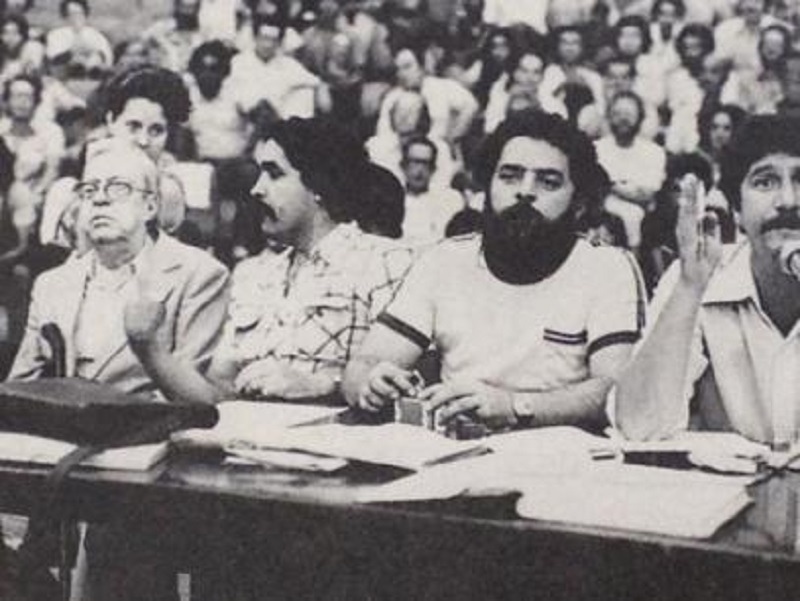
APRIL / 1980
The strike begins: 140 thousand metal workers from São Bernardo do Campo and Diadema stop working. They demand a salary raise of 15% (while the corporations offer 3.6%), besides means of guaranteeing their employment and reduction of the work week from 48 to 40 hours.
The Regional Labor Court declares the strike is illegal. Repression forces move on the striking workers, with ostensive patrolling and using Army helicopters flying over the assemblies at the Vila Euclides stadium. Lula, Marisa and their children are permanently watched. There is always a police van stationed near their home.
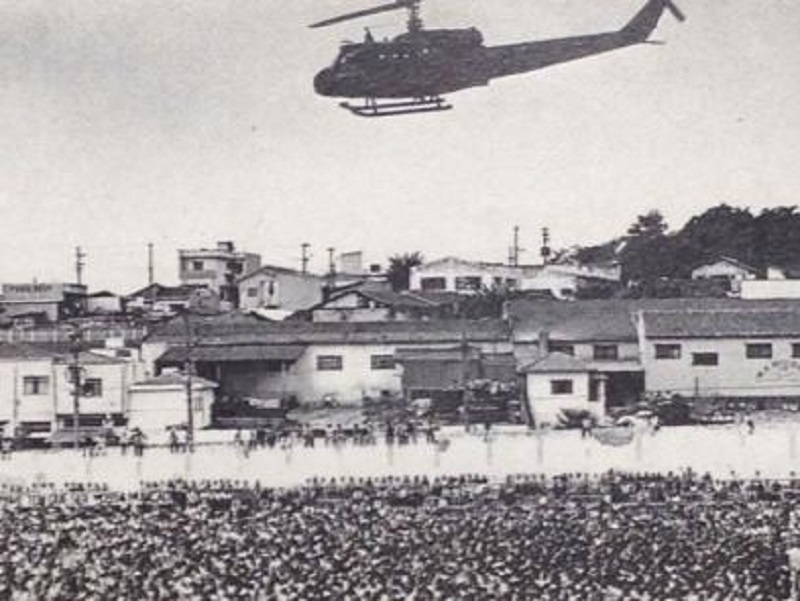
Lula’s union position is terminated by the government. The Labor minister, Murilo Macedo, declares, for the second time, an intervention at the union. Besides terminating the board, he prohibits the use of the Vila Euclides stadium for assemblies. A preventive detention warrant is issued for Lula and 16 other union leaders. These actions leave the workers enraged, and Lula becomes an oracle of sorts for the whole workers agenda.
Lula is arrested under National Security Law. At 6 in the morning, three police cars park in front of his home. Six police officers, branding assault rifles, knock on his door and enter. Lula is taken to the Department of Political and Social Order (DOPS), where he would stay for 31 days with fellow union leaders. Under arrest, he would go on a hunger strike, interrupted at the seventh day with the arrival of the Santo André bishop, Dom Cláudio Hummes. At the bishop’s invitation, the union assemblies start taking place at the main São Bernardo church.
MAY / 1980
The strike ends, at the 41st day, without an agreement, but with an important political gain. Though around 1500 striking workers were terminated in the following days, the right to strike became a national cause, which would be assured years later, in the 1988 Federal Constitution.
Ms. Lindu dies, at age 64, due to a uterine cancer, at the Beneficiência Portuguesa Hospital in São Caetano. The next day, Lula is authorized by Romeu Tuma, then director of DOPS, to leave prison, under escort, to go to his mother’s burial. The crowd at the burial surrounds the police car and tries to keep them from taking Lula back to prison. It became necessary for Lula himself to speak up and convince those protesting that, at the time, a rebellion would provide the government an excuse for even stronger repression.
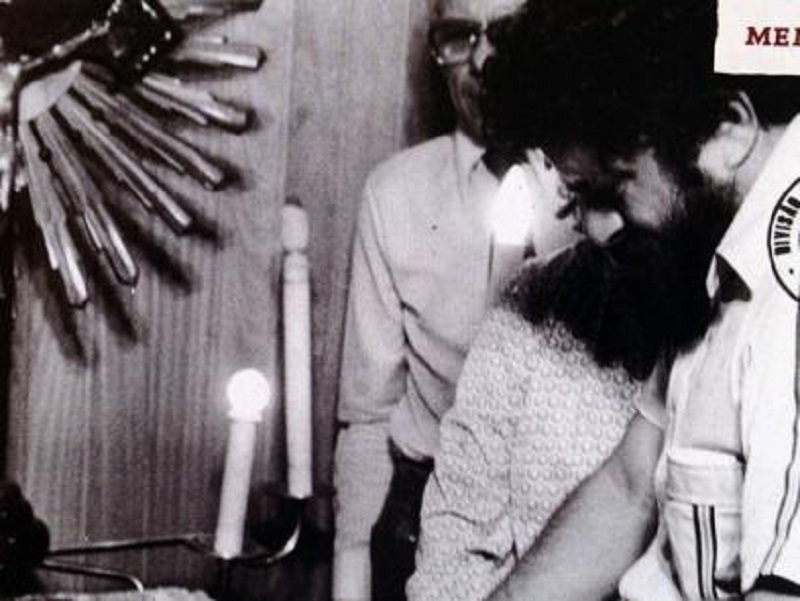
Lula’s preventive detainment is revoked and he is allowed to return to São Bernardo, where a party welcomes him. His first act when getting home is to open a bird cage and free a bird. That same year, Lula founded PT. In february 1982, he would be sentenced by the Military Justice to 3 years and six months in prison. He appeals, before being imprisoned, and, in May 1982 the case is dismissed by the Superior Military Court.
“I think I only got to where I got due to the loyalty to causes that are not mine, they are those of hundreds, thousands of people.”
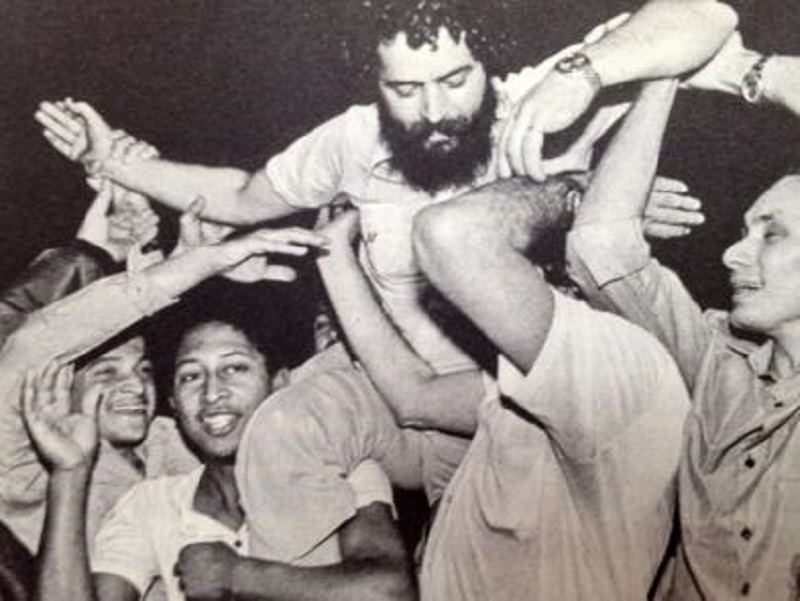
Lula is elected the first president of PT.
JUNE / 1981
As a leader and speaker for PT, Lula travels Brazil and the world. He goes to more than 10 countries in 1980 and 1981. In the US, he has an audience with Democratic Senator Ted Kennedy, brother of the late president John Fitzgerald Kennedy. In Italy, he meets with Pope John Paul II and the Polish union leader Lech Walesa, who would be condecorated with the Nobel Peace Prize in 1983 and would preside his country from 1990 to 1995.
FEBRUARY / 1982
Two years later, the Superior Electoral Court officially recognizes the founding of PT and authorizes it to participate in that year’s general elections, which would elect governors, senators, federal and state representatives, city council members and non-capital city mayors. Capital city mayors were still appointed by the state governors. Lula is the candidate for São Paulo governor and changes his legal name, to include his nickname, becoming Luiz Inácio Lula da Silva: this was a strategy to be easily recognized in the ballots by the voter, who only knew him as Lula (TN: at the time, Brazilian electoral law allowed only a candidate’s legal name to be listed in the ballots). At a debate during the campaign, one of his adversaries, Rogê Ferreira, from the PDT party, asks: “So, are you a communist, a socialist, or what?”. “I am a lathe operator”, Lula answers.
NOVEMBER / 1982
Lula gets 1,144,648 votes (10%), ending up in fourth place. André Franco Montoro, from PSDB, wins the election. Around the country, PT elects 8 federal representatives, 12 state representatives, 2 mayors and 78 city council members.
AUGUST/ 1983
Lula is one of the articulators in the creation of the Central Única dos Trabalhadores (CUT, a confederation of worker unions), founded during the 1st National Working Class Conference. The event gathers about 5 thousand union representatives in São Bernardo do Campo. Being the president of PT, Lula is not a member of the CUT board, which is headed by Jair Meneguelli, his successor as the union president.
NOVEMBER / 1983
At the Charles Miller Square, outside of Pacaembu Stadium, in São Paulo, Lula heads the first great rally for direct elections. Reporter Ernesto Varela (Marcelo Tas), was at the event:
“The pleasure in politics is to feel that the people participates, the people starts to wake up in the sense of beginning to transform the country.”
APRIL / 1984
Lula assembles a non-partisan committee for direct elections. The campaign is pushed by the political parties opposing the dictatorship. Up to April 25th, with the passing of the Dante de Oliveira Act, which reinstated direct elections, many acts and rallies mobilize millions of Brazilians in the large cities.
MARCH / 1985
Luís Cláudio, Lula’s youngest son, is born.
NOVEMBER / 1985
Fortaleza is the first capital to elect a PT mayor: Maria Luiza Fontenele.
NOVEMBER/ 1986
Lula is elected for the House of Representatives, the one that would write a new Constitution, with 631,763 votes. In the following years, he works on drafting the 1988 Federal Constitution and helps ensure the inclusion of amendments such as the right to strike, 120-day maternity leave and reducing the regular work week from 48 hours to 44.
DECEMBER / 1987
During PT’s 5th National Meeting, which took place in the Senate building in Brasília, Lula is acclaimed the party’s candidate for the 1989 Brazilian presidential election, the first after 29 years without direct presidential elections. To better focus on the campaign, Lula passes on the position of party president to the union leader Olívio Dutra, from Rio Grande do Sul. Luiz Gushiken would take over the party presidency next.
“I came here to tell you that I accept this challenge, the most important in my life. (…) I do not know if I will have competence during the battle, to live up to the confidence you had in me. Now, I ask one thing of my party: we cannot do a campaign with doubts over which segment we represent. We have to run a class campaign, talking about the interests of the working class. And we need to stand our ground. We need to show the differences [among the parties]. Otherwise, the peãozada (low-level workers) will not get our message. To the fight!”
OCTOBER / 1988
Lula is the main mobilizer of the PT campaign for city mayors. The party wins in three capitals: São Paulo (Luiza Erundina), Porto Alegre (Olívio Dutra), and Vitória (Vitor Buaiz). In total, PT wins 36 cities, among them important centers such as Campinas and São Bernardo do Campo.
MARCH / 1989
Lula is a presidential candidate. He heads the Frente Popular (Popular Front) coalition, supported by PT, the Brazilian Socialist Party (PSB), of his vice-presidential candidate José Paulo Bisol, and the Communist Party of Brazil (PCdoB). His campaign has great success spreading the jingle “Lula Lá” (“Lula there”). Also known as “Sem medo de ser feliz” (“No fear of being happy”), or “Brilha uma estrela” (“A star shines”), the song would keep being used in future campaigns:
Lula lá, Brilha uma estrela / Lula lá, Cresce a esperança / Lula lá, O Brasil criança / Na alegria de se abraçar
Lula there, A star shines / Lula there, The hope grows / Brazil, a child / Lula there, In the joy of an embrace
Lula starts to be seen as the frontrunner. The campaign is polarized against Leonel Brizola, of the PDT party, in the first months. Until the emergence of Fernando Collor de Mello’s candidacy, the self-proclaimed “caçador de marajás” (TN: literally, “maharaj hunter”; the moniker maharaj was applied to describe civil servants who got extremely wealthy), over the second semester. A Senator from the state of Alagoas in the tiny PRN (Partido da Reconstrução Nacional – Party of National Reconstruction), Collor is endorsed by the oligarchies, the banks, the large industries, and the media, particularly Rede Globo (TN: Brazil’s broadcast tv network with the widest market share and the most affiliated stations). Also in the dispute were Mário Covas (PSDB), Paulo Maluf (PDS), Guilherme Afif Domingos (PL), Ulysses Guimarães (PMDB) and 15 others.
“There is a candidate type I call político-Xuxa: before the election, they are all kisses. After the election, just goodbyes.”
NOVEMBER / 1989
Lula gets 11,622,673 votes (16%) and proceeds to the runoff election round against Collor (who got 28.5% of the votes). Now, his candidacy is supported by a wide network of progressive parties: PDT, PSDB, PV, PCB, and part of PMDB, joined with PT, PSB and PCdoB.
DECEMBER / 1989
O empresário Abílio Diniz, dono da rede de supermercados Pão de Açúcar, é sequestrado em São Paulo. Na TV, são veiculadas imagens de um sequestrador com uma camiseta da campanha de Lula. Em depoimento à polícia, Humberto Paz, o sequestrador, diria ter sido torturado e obrigado por policiais a vestir a camiseta.
Abílio Diniz, owner of retail chain Pão de Açúcar, is kidnapped in São Paulo. The media broadcasts images of a kidnapper wearing a Lula campaign T-shirt. In a statement to the police, Humberto Paz, the kidnapper, would later claim he was tortured and forced by police officers to put on the shirt.
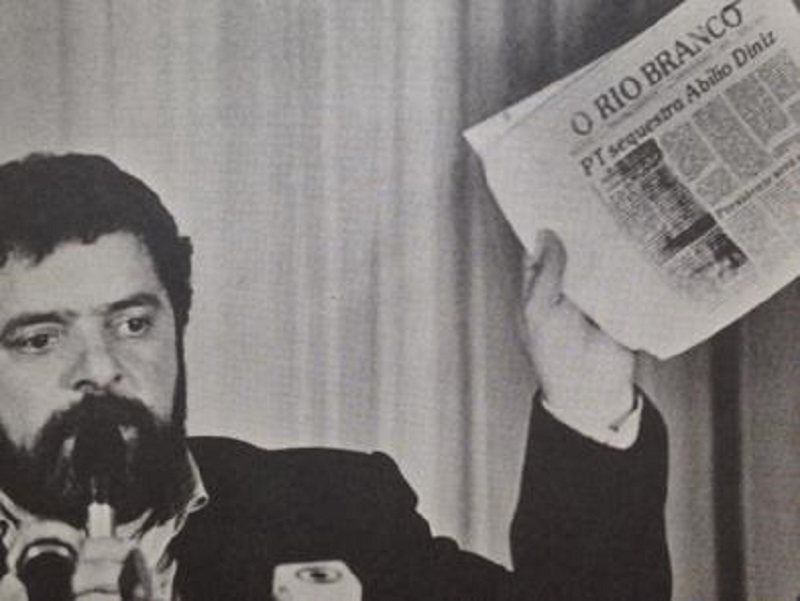
In another play by the opposition to beat the PT candidate, Collor’s penultimate TV show (TN: under Brazilian electoral law, candidates are entitled free time on two daily TV and radio slots, when all stations are required to broadcast the videos of the campaigns) airs an interview with Miriam Cordeiro, Lula’s ex-girlfriend, in which she claims Lula, after getting her pregnant in 1973, offered her money so she would get an abortion (TN: abortions were, and still are, banned in Brazil) and did not take responsibility for the child: “I cannot support a man who ruined my life”, she says.
The interview is aired again the next day, on Jornal Nacional on Globo TV (TN: Brazil’s most widely watched primetime national daily news show). Apparently, Miriam was paid 200 thousand Cruzados Novos, about 24 thousand US dollars at the time, for her statement. Shaken, Lula takes his 15 year old daughter to the his last TV show, the next day:
“I will not answer to Lurian’s mother, because Lurian is not the result of an act of hate. Lurian resulted from an act of love. (…) For me, really, what matters is the judgment my daughter has of me. And I am absolutely certain she will know how to judge, better than anyone else, her father.”
The last debate between Lula and Collor takes place. The excerpts chosen to be shown the next day on Jornal Nacional are biased in favor of the PRN candidate. 22 years later, José Bonifácio de Oliveira Sobrinho (“Boni”), then general director of Globo, would admit, in an interview to Geneton Moraes Neto, in 2011, that the network not only edited the debate in favor of Roberto Marinho’s (Globo’s owner) favorite, but also how he helped to stage the debate, interfering in Collor’s makeup and planting empty folders, for Collor to claim they were filled with documents and accusations against Lula. “I only did not put some makeup on his (Collor’s) jacket’s shoulders because he did not let me”, Boni said.
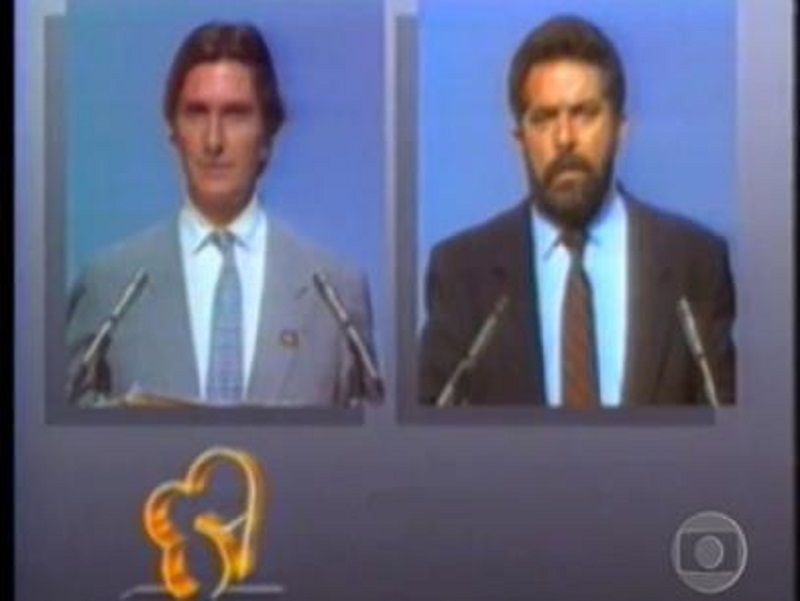
Lula is defeated in the runoff election, getting 31,076,364 votes, against 35 million attributed to the elected candidate. Collor gets 53% of the votes, and Lula, 47%.
“Very little mas missing so that, for the first time in our history, the people could obtain the government of Brazil. Nothing will be able to erase from my memory and my eyes the great spectacle that the the Brazilian people promoted during the entire year of 1989: a fight for rescuing the Brazilian people’s hope and dignity.”
JULY / 1990
Lula starts Governo Paralelo (“Parallel Government”), a think tank inspired by an identical initiative from the British Labor Party, with the mission to monitor the policies adopted by Collor and formulate alternative proposals. This structure, in informal operation since the end of 1989, would originate, years later, Instituto Cidadania (“Citizenship Institute”), where important public policies would be formulated, such as Fome Zero (“Zero Hunger”).
JUNE / 1992
Lula is the main leader of the opposition to the Fernando Collor administration. As PT president, he mobilizes the representatives and works to install a Congressional Committee (CPI – Comissão Parlamentar de Inquérito) to investigate accusations of corruption, criminal conspiracy (headed by bookkeeper Paulo César Farias), embezzlement and use of public funds to pay for personal expenses (the purchase of a car and housekeeping for his mansion in the capital, known as “Casa da Dinda”). Two PT members of congress presented a formal requirement for the creation of the CPI: Senator Eduardo Suplicy and representative José Dirceu. From these accusations came the Movement for Ethics in Politics. The “painted-faces” (protesters who painted their faces with the colors of the Brazilian flag) hit the streets asking for Collor’s impeachment.
SEPTEMBER / 1992
The House of representatives passes the impeachment resolution for the first president elected after the return to democracy. Polls show that if a presidential election had been held at that moment, Lula would have been elected.
MARCH / 1993
Invited to join the Itamar Franco administration (TN: Franco was Collor’s vice president, who inherited the presidency), PT decides not to accept any offices in that administration. Lula helps articulating a national hunger combat movement. The plan is to make the 32 million Brazilians living below the poverty line (one fifth of the population) a first order political issue. The project for implementing a national food security policy inspires the campaign Ação Nacional Contra a Fome, a Miséria e pela Vida (National Action Against Hunger and Poverty, and for Life), also known as “Betinho’s movement”, for it was conducted publicly and in the media by the sociologist Herbert de Souza.
The Parallel Government becomes the Instituto Cidadania. In the following years, until Lula’s election, this entity would produce important public policy proposals in areas such as habitation, food security and energy.
APRIL / 1993
A referendum takes place to define the form (monarchy or republic) and the system (presidentialism or parliamentarism) of Brazil’s government. Despite many party members preferring parliamentarism, PT opts for supporting the presidential system, which in principle grants more power to the president, confident in Lula’s victory the following year.
In Garanhuns, Lula stars the first Citizenship Convoy, interested in better knowing Brazil, and, especially, the main difficulties of the poorest and most excluded Brazilians. His journey brings up urgent themes, such as land conflicts, obstacles to agricultural production, drought and extreme poverty. Until July next year, Lula and his team would go on seven journeys, with seven distinct routes, traveling all 5 of Brazil’s major regions, in a total of 40 thousand km (25 thousand miles). Newsweek magazine runs an extensive story on the initiative. Intuitively, Lula prepares to run for presidency again, next year.
“The dominant classes have their eyes towards Europe and their asses towards Brazil.”
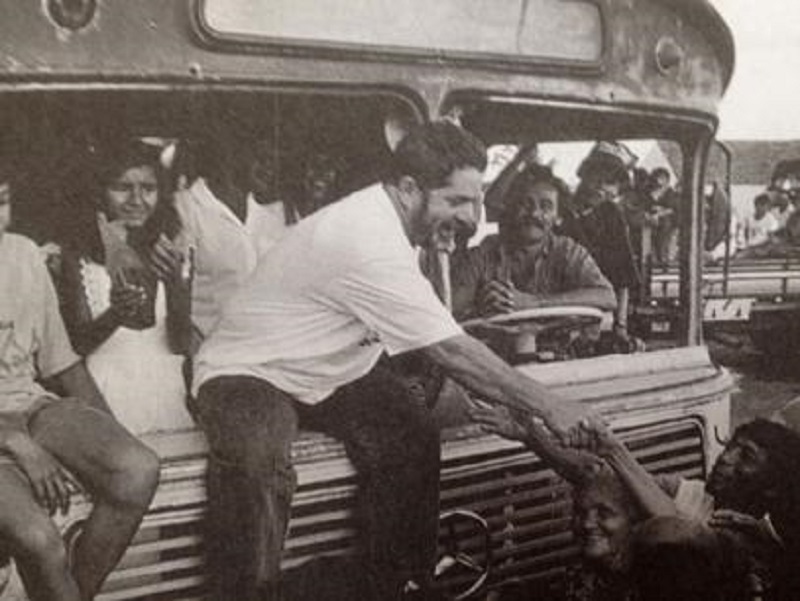
SEPTEMBER / 1993
As an opposition leader, Lula echoes accusations presented against the “budget midgets”, members of congress accused of running a kickback scheme based on fraudulent approvals of parliamentary bills.
“There is in Congress a minority who cares about and works for the country, but there is a majority of about 300 crooks who only look after their own interests.”
His statement, defending the opening of a Congressional Committee (CPI) to investigate the accusations against the “budget midgets”, inspires Herbert Vianna, from the pop group Paralamas do Sucesso, to write “Luiz Inácio (300 crooks)”. Released in 1994, the song is censored. The song’s chorus reads:
Luiz Inácio falou, Luiz Inácio avisou / São 300 picaretas com anel de doutor
Luiz Inácio spoke, Luiz Inácio warned / There are 300 crooks with doctor’s rings
Considered unbeatable in next year’s presidential race, Lula keeps constant talks with leaders of the PSDB party, trying to fix an alliance for next year’s race. After one of these talks, Tasso Jereissati (from PSDB) is nearly certain as Lula’s vice-presidential candidate. The PT-PSDB alliance, however, would implode a few months later, with the rise of the candidacy of then minister Fernando Henrique Cardoso, launched by PSDB members from São Paulo.
JUNE / 1994
Lula is a presidential candidate for the second time. His main adversary is sociologist Fernando Henrique Cardoso (FHC). As Finance Secretary in the Itamar Franco administration, he is purported as the “father of the Real” (TN: Real, the current Brazilian currency, was launched by the Itamar Franco administration as one of many measures to contain hyperinflation), due to the administration’s success in controlling inflation by pegging to the US Dollar for the creation in March, of a transition currency, the Unidade Real de Valor (URV), precursor to the Real, introduced on July 1st. As a candidate for PSDB, Fernando Henrique – who received Lula’s support when he ran for the Senate, in 1978, and was present in some of the PT creation meetings, in 1979 – is now supported by all sectors that, at the time, were fearful of Lula getting elected.
With ample video material recorded during the Citizenship Convoys, since the previous year, and famous for drawing large crowds to his rallies, joined by several artists on stage, Lula is caught by surprise with a newly approved bill initiated by PSDB and PFL, his adversaries: on that year, videos recorded outdoors would be banned from use in the campaign TV shows.
Due to the campaign work, Lula again leaves the presidency of PT, being replaced by Rui Falcão. On the 10th National Party Convention, which took place on the following year in Guarapari, Lula would be presented as “honor president” of the party. Accusations against José Paulo Bisol, who was his running mate the in 1989 and was going to do so again in 1994, forced them to make a new ticket, with the campaign already under way. Aloizio Mercadante, then a member of Congress, was chosen in Paulo’s place.
OCTOBER / 1994
Lula gets 18% of the vote, and loses on the first round to FHC, who gets elected with 36% of the vote. The sum of all other candidates does not exceed 18% of the votes. For the first time, PT elects two governors: Vitor Buaiz, in Espírito Santo, and Cristovam Buarque, in Brasília.
OCTOBER / 1996
In the municipal elections, PT elects 187 city mayors (up from 54 in 1992). Among them, two capitals: Porto Alegre, with Raul Pont, and Belém, with Edmilson Rodrigues.
MAY / 1997
Vale, then known as Vale do Rio Doce (TN: Brazil’s State mining corporation, one of the largest in world), is privatized. In an auction that was contested in the courts, the Brazil consortium, lead by CSN (TN: Companhia Siderúrgica Nacional, a large Brazilian steel corporation), buys Vale for R$ 3.3 billion – about 3.1 billion US Dollars at the time, 20% over the minimum asking price. In the opposition, Lula chastises the administration not only for the privatization, but also the price. In the year 1999 alone, the the company would have a profit of R$ 1.21 billion, about a third of the entire sales price. The criticism to the privatizing policies by Fernando Henrique Cardoso becomes one of the pillars of PT. Between 1997 and 2002, 133 Brazilian State companies would be privatized, according to IBGE. The option for privatizing State companies follows the Washington Consensus, a neoliberal playbook adopted by the International Monetary Fund and pushed on developing countries, which had privatization as one of its ten pillars. Lula also criticizes the creation of Proer, a program to help banks and financial institutions which were having difficulties from the economic stability (most of them relied on inflation to make money). Between 1995 and 2000, about R$ 30 billion in public funds were allocated to the credit lines created by the administration to save failing banks, such as Nacional, Econômico and Bamerindus, and to avoid a purported collapse of the financial system. Mergers and privatizations of state level banks, many with severe fiscal problems, were incentivized by the program.
JUNE / 1997
The Senate passes the constitutional amendment that creates the possibility of re-election for president, governors and mayors. The scoreboard shows 62 votos for and 14 against, repeating the ample majority obtained in the House: 369 vs 111. The decision is already valid for next year’s election, thus benefiting then president Fernando Henrique Cardoso. Accusations emerge, with confessions from representatives who said they sold their votes to the administration.
JULY / 1998
Telebrás (the nationwide phone system) is privatized in an auction.
OCTOBER / 1998
After spending the whole year of 1997 stating he would not run, Lula gives in to the appeals from his party and accepts running for president a third time. He loses again to Fernando Henrique Cardoso, who got 53%, while Lula got 32%, on the first round. Ciro Gomes, from PPS, gets third place, with 11% of the votes. PT wins the gubernatorial elections in three states: Olívio Dutra, in Rio Grande do Sul, Zeca do PT in Mato Grosso do Sul, and Jorge Viana, in Acre.
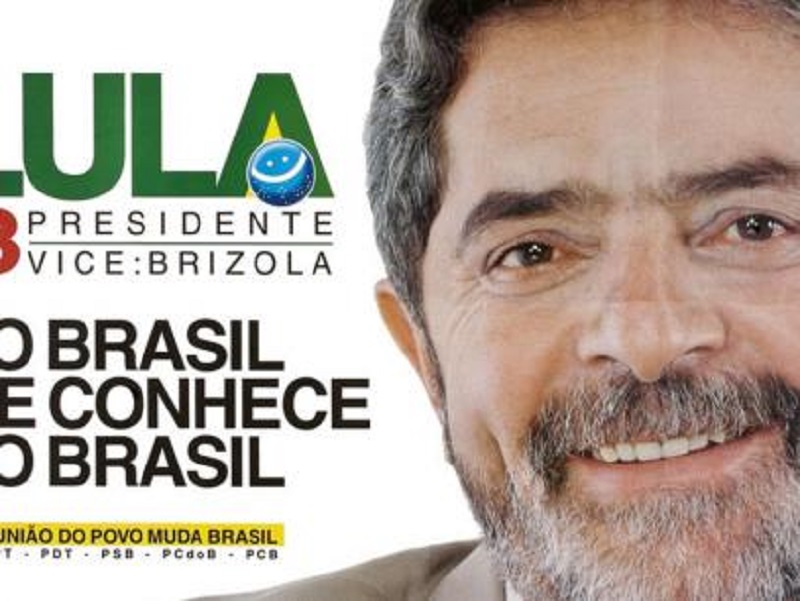
JANUARY / 1999
Right at the beginning of his second term, FHC introduces a different monetary policy from what he promised in his campaign. The Central Bank adopts a floating exchange rate, quitting its control over the exchange. Up to 2000, the currency went through an unprecedented devaluation, confirming the thesis that the currency artificially pegged to the US Dollar had been kept at all cost, thanks to high interest rates and low investment in production, with the explicit goal of assuring FHC’s re-election. Crises sparked in Asia, Russia and Argentina at the end of the 1990s compromise the Brazilian commercial balance and help the crash in commodities prices due to the reduction in exports. The administration loses popularity and Lula is seen as frontrunner for the 2002 presidential election.
OCTOBER / 2000
In the municipal elections, PT emerges, for the first time since its creation, as the most voted party in Brazil. It wins 187 cities, including São Paulo (Marta Suplicy), Recife (João Paulo), Porto Alegre (Tarso Genro), Goiânia (Paulo Wilson), Aracaju (Marcelo Déda) and Belém (Edmilson Rodrigues). The number of city council members jumps from 1895 to 2485 and shows that PT has reached enough maturity for victory in the presidential election.
JANUARY / 2002
The mayor of Santo Adré, Celso Daniel, is assassinated. A personal friend of Lula’s he was chosen by the then pre-candidate to coordinate his program. After the tragedy, Celso is substituted by Antonio Palocci, two-time mayor of Ribeirão Preto and former state president of PT.
MARCH / 2002
PT runs a primary to choose its presidential candidate. Senator Eduardo Suplicy, from São Paulo, also runs, as an alternative. Lula is practically acclaimed, obtaining 80% of the votes. Lula puts two conditions: he would only run if PT established a wide network of alliances, capable of bringing together several sectors of society, including those traditionally averse to the party. He also wanted a running mate from the corporate sector.
José Alencar Gomes da Silva is officially Lula’s running mate. This time, his vice-president is a businessman from Minas Gerais, from the textile sector, a former president of the Minas Gerais Industry Federation. The pair is celebrated as a convenient capital-workforce alliance. They have commonalities in their past. Both had poor childhoods, started working at an early age, did not attend university, and became union leaders, each on their own manner: one represented the workers, the other represented the bosses. To run, Alencar would change from PMDB to the Liberal Party (PL), a conservative party with strong evangelical support.
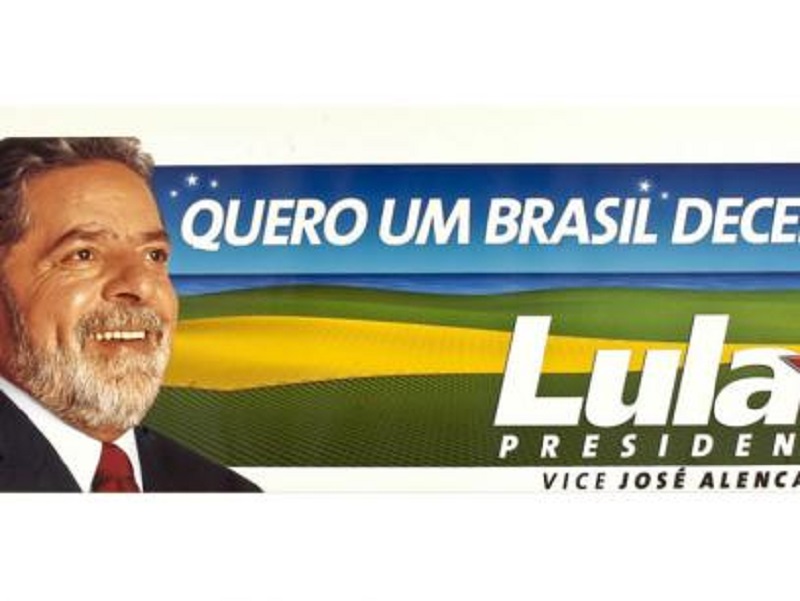
JUNE / 2002
In a meeting promoted to disseminate his platform, Lula read the famous Letter to the Brazilian People. Written to soothe the nerves of the markets and widen his electoral base, it reveals a more moderate side of Lula, with a commitment to honor contracts, including on the foreign debt, and the IMF accords. The letter also shows a commitment to maintain control of the inflation, while criticizing the current economic policy, to which he blamed the economic stagnation and the high unemployment.
“The new model will not be a product of unilateral administration’s decisions, as it happens today, neither will it be implemented by executive order, in a spontaneous manner. It will be the result of an ample national negotiation, which must lead to an authentic alliance for the country, to a new social contract, capable of ensuring growth with stability. The premise of this transition will naturally be honoring contracts and the county’s obligations.”
SEPTEMBER / 2002
The campaign takes off. Following recommendations from his PR, Lula adopts a new image. He shaves his beard every week, wears a navy blue suit and red tie in almost all events, smiles more, yells less: the media refers to him as “Lulinha paz e amor” (“Lulinha peace and love”).
OCTOBER / 2002
Lula wins the first round with twice the number of votes of José Serra (PSDB), with 46.4% of the votes, to Serra’s 23.2%.
In the runoff election, Lula is elected President of the Republic, on the very day of his 57th birthday. He gets 52,793,364 votes, 61.3% of the total, compared to 38.7% for José Serra. About 150 thousand people gather at Avenida Paulista for the victory celebration. The crowd sings “Happy birthday to you” for Lula. In his speech, Lula pays homage to his mother, founders of PT such as Mário Pedrosa and Sérgio Buarque de Holanda, historic PT leaders such as Chico Mendes and Carlito Maia, and fellows such as Henfil, Paulo Freire, Betinho, João Amazonas, Celso Daniel and Toninho do PT.
“I want you to know that Zé Alencar and myself, the administration we are putting together, we will work 24 hours per day, from Sunday to Sunday, so that we can deliver on each promise we made during this campaign. (…) We need to guarantee that each man and each woman, no matter how poor, have the right for a breakfast, lunch and dinner every single day. We have to guarantee people the right to housing. We need to guarantee people the right to reach their full citizenship.”
DECEMBER / 2002
Lula is certified 36th President of the Republic by the Superior Electoral Court. He delivers an emotion-filled speech and cannot hold back his tears.
“If there was someone in Brazil who doubted a lathe operator, coming out of a factory, could reach the Presidency of the Republic, the year 2002 proved the exact opposite. And me, who so many times got chastised for not having a college diploma, now I get my first diploma. The diploma of President of the Republic of my country.”
President
JANUARY / 2003
Lula is handed the presidential sash from Fernando Henrique Cardoso. During the ceremony, the departing president fumbles with the sash, and when taking it off, drops his glasses. Immediately, the entering president kneels down to retrieve the glasses and returns them, without fuss, to the predecessor. For the first time, there is a worker at the presidency. Lula is, also, the first civilian president born in Pernambuco, the first without a college degree, and the first one affiliated to a leftist party. Lula goes on the open car parade through the national mall on the official presidential Rolls Royce, first next to the vice-president José Alencar, and, next, with the first lady Marisa Letícia. At some point, the car had to be pushed. In his first speech, he proposes a new social pact, promises agrarian reform, ratifies his commitment with production and job creation, and states that combating hunger is his main goal. From beginning to end, he praises the sense of change that his victory represented.
“Change: this is the key word, this was the great message from the Brazilian society in the October elections. Hope, finally, won over fear and the Brazilian society decided it was the time to take a new route. (…) This is what the Brazilian people elected me for: to bring about change. This was the meaning of each vote given to me and to my brave fellow José de Alencar. (…) Today is the day for Brazil to rediscover itself.”
Lula takes over half his cabinet for a trip through poor areas in the Northeast and Minas Gerais. In the route, places such as favela Irmã Dulce, in Teresina, the stilt houses in Recife and the town of Itinga, in the Jequitinhonha Valley. The purpose is to to make sure his team would know poverty and understand the need to prioritize income distribution policies.
Lula chooses his official portrait. In the picture, he is smiling, with a national flag as the background, and without the presidential sash. Before him, only Itamar Franco posed without the green and yellow sash. In his second term, Lula would resume the tradition of posing with the sash.
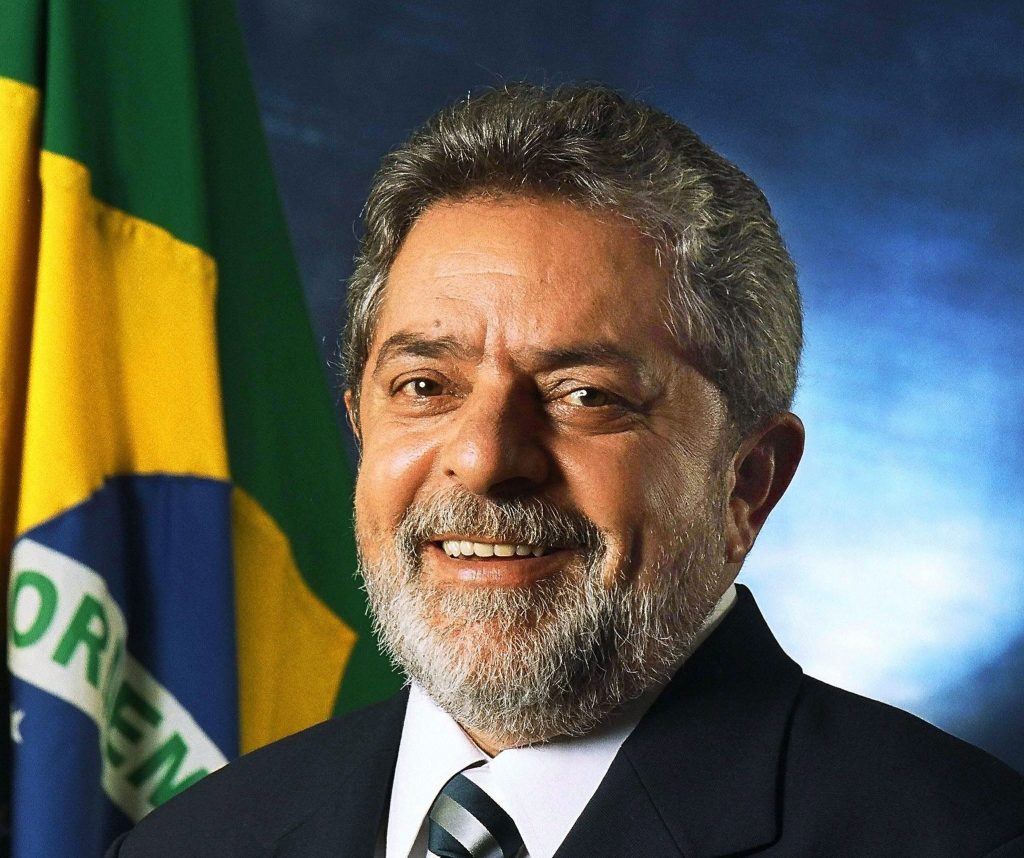
Lula is the first president to deliver a speech at the World Social Forum, now in its third edition, in Porto Alegre.
“To run a country is like a marathon: one cannot start running at full speed because they would run out of breath at the first corner. One needs solid, concrete steps, so that one can finish the administration with the feeling of a duty fulfilled.”
“Over ten years after the fall of the Berlin wall, there are still walls that separate those who eat from the hungry, those who have work from the unemployed, those who live with dignity from those who live on the streets or in poor favelas, those who have access to education and humanity’s cultural repertoire from those who live drowning in illiteracy and the most absolute alienation.”
Institutional launch of the Zero Hunger Program
“Today we are taking a great step ahead. I know that, until we reach our goal, it will be a long walk. Hunger will not be overcome overnight, nor with just a few isolated measures from the administration. The victory over hunger will demand a lot of effort, a lot of persistence, a lot of courage and dedication from all of us, during the next four years.”
MAY / 2003
Lula appoints Joaquim Barbosa Justice of the Supreme Court (STF). Over his eight years as president, Lula would appoint seven other justices, making him the president who appointed the most justices since the dictatorship: Eros Grau, Carlos Alberto Menezes Direito, Ayres Britto, Cármen Lúcia, Ricardo Lewandowski, Cezar Peluso and Dias Toffoli. From a poor upbringing and a former janitor, Barbosa did a Ph.D. at the Sorbonne University (France) and was a Federal Deputy Attorney before becoming the first black member of the Brazilian Supreme Court. Years later, then as the Chief Justice, Barbosa would come into the spotlight in the trial of the so-called “mensalão” (TN: allegations that payments were made to members of Congress to secure their votes) and he would lead the conviction of members of Lula’s administration and PT leaders.
JULY / 2003
Lula hosts MST (Movimento dos Sem-Terra – Landless people’s movement) at Palácio do Planalto (TN: the Brazilian presidential palace). Lula puts on the movement’s hat, ratifies his commitment with agrarian reform and says land invasions make the process more difficult.
OCTOBER / 2003
Lula unifies social programs such as Fome Zero, and creates the Bolsa Família, which benefits 3.6 million families, initially, and would become his administration’s signature program.
NOVEMBER / 2003
Launch of the program Luz para Todos (Light for Everyone), which would reach over 3 million rural homes until 2014, universalizing access to electricity.
JANUARY / 2004
The PMDB party joins the administration’s coalition, which becomes the majority group in Congress. This is in contrast to the previous year, when the administration had to negotiate with small parties and individual representatives in order to pass each bill.
FEBRUARY / 2004
The Época magazine runs a story with the first grave accusation against the Lula administration. Waldomiro Diniz, then Undersecretary for Parliamentary Affairs, and working for Chief of Staff José Dirceu, is accused of being connected to businessman and illegal gambling chief Carlinhos Cachoeira. In a video released by Cachoeira himself, he is seen been extorted by Diniz. The money would be used in PT campaigns in Rio de Janeiro and, in exchange, Diniz would help the businessman winning a public contract. As Diniz did not deliver on his promise, Cachoeira released the video.
By the end of the year, the Brazilian GDP had grown 5.2%, a surprising result compared to the 0.5% of the previous year. The most GDP growth obtained by Fernando Henrique Cardoso during his eight years was 4.4%, in 2000. Lula takes office with the country being, in 2003, the 13th largest economy in the world, and he would bring it to 7th, eight years later.
JANUARY / 2005
Lula launches the program Universidade para Todos (ProUni – University for all), developed by the Education Ministry to ease the access of low income students to higher education, by granting scholarships on private universities (TN: this was in addition to the public universities, which are tuition-free in Brazil). By the end of the second term, 750 thousand students had benefited from this program.
JUNE / 2005
In an interview to Folha de S. Paulo, Representative Roberto Jefferson, president of the PTB party, accuses the administration of paying allowances to representatives in exchange for votes. A new word is coined by the media, “mensalão”. This is the beginning of the worst crisis in the Lula administration.
Accused of being the coordinator of the “mensalão”, Chief of Staff José Dirceu resigns. Four days later, Lula would replace his leading man by the administration’s leading woman, then Minister of Mines and Energy, Dilma Rousseff.
DECEMBER / 2005
Brazil pays off its debt with the International Monetary Fund (IMF).
FEBRUARY / 2006
For the first time since the “mensalão” accusations, Lula is the frontrunner in the polls for the year’s election, beating every possible adversary, in both rounds.
MARCH / 2006
Finance Secretary Antonio Palocci resigns, under suspicion of leaking financial information on housekeeper Francenildo Costa, who had accused him of visiting a Brasília mansion to secure suspicious deals with lobbyists. He is replaced by Guido Mantega, who disappoints those expecting important changes in the economy, when he states that the policies are determined by the president himself: “Lula is the sole sponsor of the financial policy”, he says.
Brazil goes into orbit. Marcos Pontes is the first Brazilian astronaut to go into space, and sets foot in the International Space Station, for a 10-day mission. He was selected by the Brazilian Space Agency (AEB) and by NASA.
OCTOBER / 2006
The first round of the presidential election takes place. The PSDB candidate, Geraldo Alckmin, gets 41.6% of the votes and thwarts Lula’s hopes of winning in the first round. Lula, absent in the final debate, gets 48.6% of the votes.
Lula gets re-elected with over 58 million votes, or 60.8%, in the runoff round. In absolute numbers, it is the biggest vote obtained by any western Head of State, surpassing the previous record held by Ronald Reagan, who got 54.5 million votes in 1984. Alckmin gets 39.1% of the votes, less than what he got in the first round.
The IPCA index records an annual inflation rate of 3.14%, the lowest since 1998. In 2002, the last year of the previous administration, it was 12.5%. The result is celebrated by the administration and contributes to the approval of the economic policies.
JANUARY / 2007
Lula is inaugurated in a rainy day. In his speech, he defines the priorities for the next four years: to accelerate, to grow and to include.
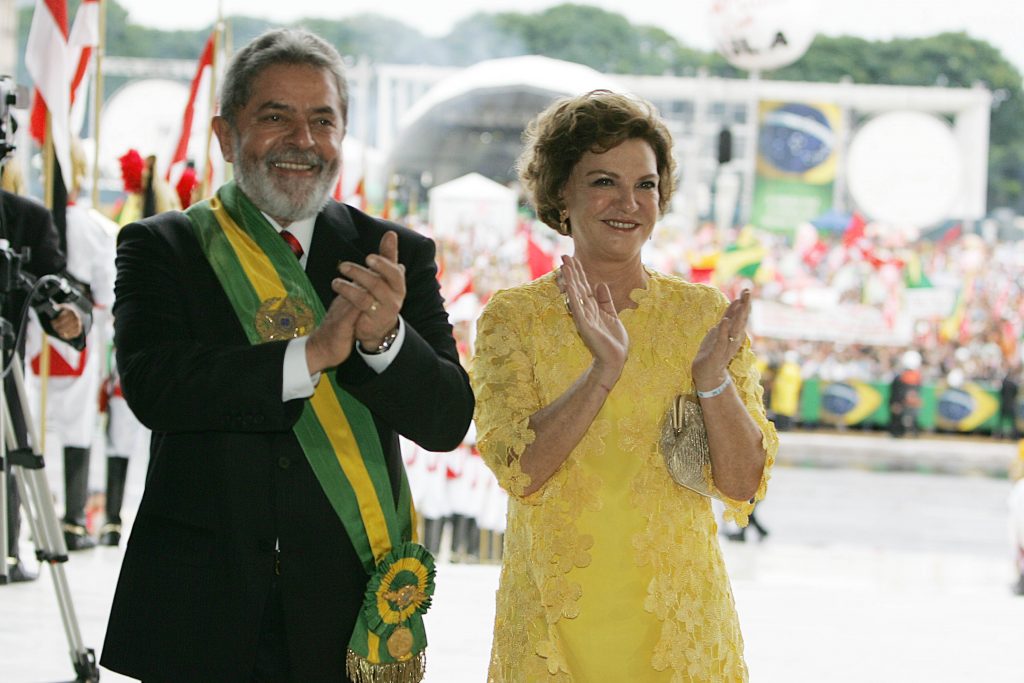
The administration launches the Programa de Aceleração do Desenvolvimento (PAC – Growth Acceleration Program), a set of structural measures, including credit lines, stimulus for direct investments, and infrastructure works, particularly in social sectors such as housing, sanitation and transportation. The plan is to make it the signature program of the second term, just as Bolsa Família was the signature of the first.
MARCH / 2007
US president George W. Bush visits Brazil. Next to Lula, he announces a technology cooperation agreement for ethanol production.
JUNE / 2007
The main Brazilian stocks index (Bovespa) closes the first semester on a 22% high, the biggest since 1999.
AUGUST / 2007
The Supreme Court accepts all accusations against the suspects in the “mensalão” case, who add up to 40 defendants.
OCTOBER / 2007
In a ceremony in Zurich, Switzerland, FIFA confirms Brazil will host the 2014 FIFA World Cup. No surprises, given it was the only candidacy.
NOVEMBER / 2007
The discovery of huge oil reserves in Brazil’s pre-salt layer is announced. The reserves extend from north of the Campos Basin to south of the Santos Basin. The reserves are estimated to contain 2 billion barrels of oil.
MARCH / 2008
Lula opens PAC works at the Complexo do Alemão (TN: one of the largest favelas in Rio de Janeiro), and presents Dilma Rousseff as “mother of the PAC”. The Chief of Staff is now seen as probable candidate for presidential succession.
MAY / 2008
Alleging lack of political support and criticizing the excessive development in the administration’s agenda, Marina Silva, Minister for the Environment since the beginning of the first term, resigns and is replaced by Carlos Minc. In August of the following year, she would officially leave PT to join the opposition. She would run for presidency in 2010 for the Green Party (PV).
SEPTEMBER / 2008
Lula gets his hands dirty with oil when participating on the first, symbolic, extraction of oil from the pre-salt layer, at a Petrobras platform in the Jubarte Fields, in Espírito Santo.
“I had the pleasure of getting my hands in the oil, and it is a feeling I think is unique for a person who has the privilege of presiding the country in this moment. (…) If we consider what is on schedule until 2017, we will exceed 2 trillion Reais in investment in the Brazilian economy.”
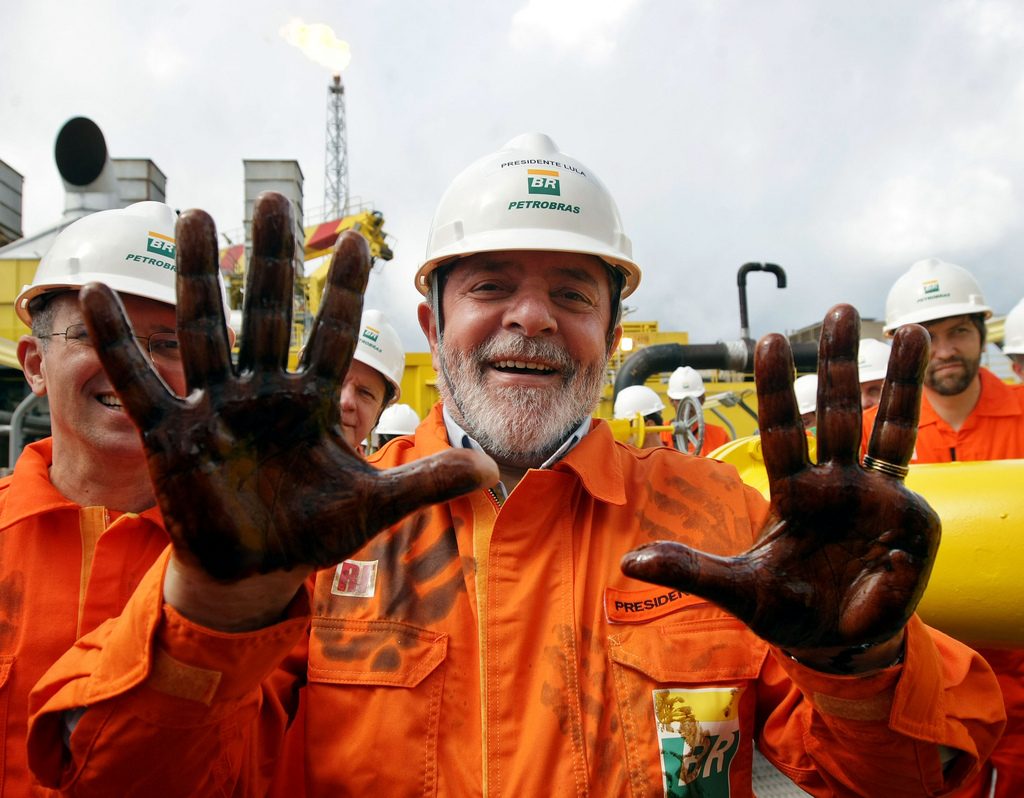
NOVEMBER / 2008
Barack Obama is elected president of the United States.
Banco do Brasil announces it is buying Nossa Caixa bank, and recovers the position of largest bank in Brazil. Weeks before, on November 3, the merger of Itaú and Unibanco had formed a financial giant that had overtaken the public bank.
DECEMBER / 2008
In a speech to the nation, Lula celebrates the fact that the country had been through the world financial crisis largely unaffected, which he attributes to achievements of his administration, such as raising the minimum wage, the reduction in unemployment and the volume of foreign currency reserves. “In the previous crises, in a few days Brazil would crash and would have to ask for help from the IMF.”, he says. “This time, Brazil did not crash, nor is it going to. It is facing this situation proudly. While most rich countries are in recession, Brazil will keep growing.”
“If you are in debt, first try to balance your budget. But if you have some money in your pocket or you just received you year-end bonus, and you would like to buy a refrigerator, a stove, or replace your car, do not suppress your dream, in fear of the future. Because if you do not buy, the stores will not be selling. If stores are not selling, they will not place new orders to the factories. Thus the factories will produce less and, in the medium term, your job might be at risk. Thus, when you and your family buy a good, you are not just fulfilling your desire. You are also contributing to maintain the whole economy running. And that is good for everybody.”
MARCH / 2009
By 10 votes to 1, the Supreme Court upholds the establishment of the Raposa Serra do Sol indian reservation, in Roraima, in an important victory for the indigenous peoples and the environmentalists over the plantation owners. That decision reaffirms the main achievement of the Lula administration on indigenous issues.
The program Minha Casa, Minha Vida (My house, my life) is launched with funding from Caixa Econômica Federal. The housing plan envisions building and delivering one million units in its first phase, for families with monthly income up to R$ 5 thousand, through partnerships with states and municipalities. At the end of the term, in December 2010, 1 million homes had been contracted. By 2014, it would exceed 3 million, among homes delivered and under contract.
APRIL / 2009
During a G20 meeting in London, US president Barack Obama shakes Lula’s hand, turns to the Australian prime-minister, Kevin Rudd, and, pointing to Lula, says: “This is the man! I love this guy.” According to Obama, Lula is “the most popular politician on Earth”.
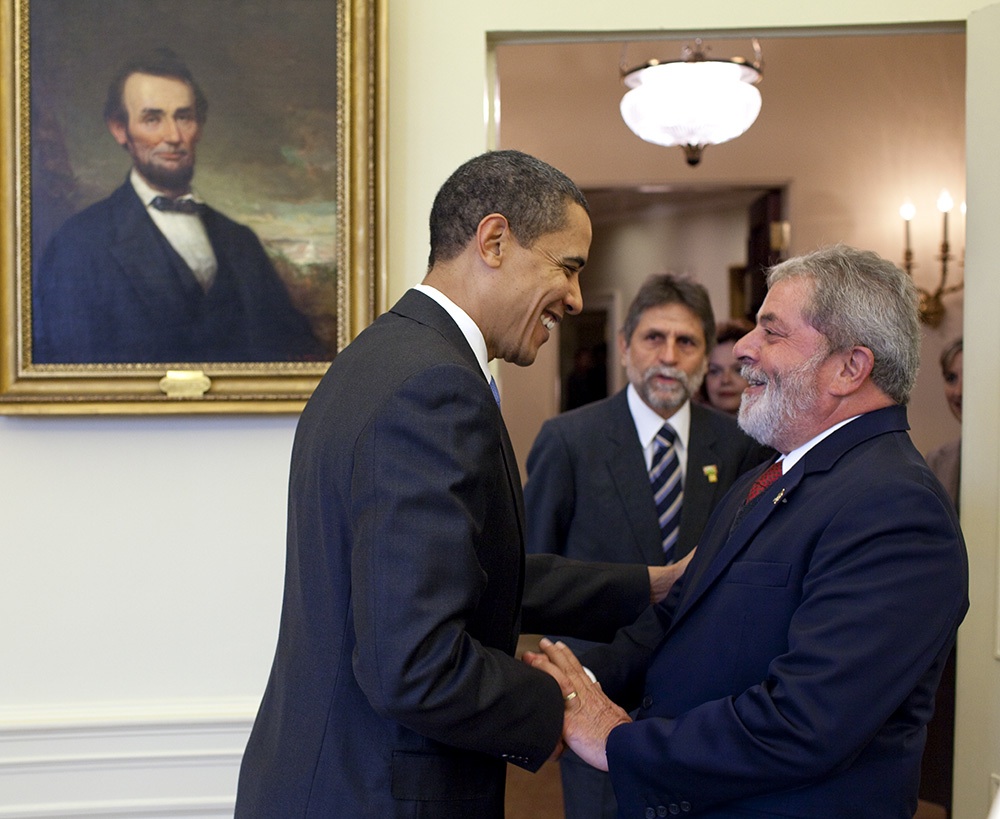
Dilma Rousseff announces she has cancer and undergoes chemotherapy to fight the lymphoma. She keeps her position during the treatment, which would take five months, until she confirmed the remission.
JULY / 2009
The House Constitution and Justice Committee (CCJ) passes unanimously the report from representative José Genoino for dismissing the constitution amendment bill presented by representative Jackson Barreto, from PMDB, which would create the possibility of a second re-election. In other words, this ends the possibility of a third term for Lula, as well as mayors and governors. Lula and PT had already manifested against the proposal.
The expression “never before in the history of this country”, recurring in Lula’s speeches, is sarcastically taken up by the media and social networks. Blogger Paulo Henrique Amorim refers to Lula as “Nunca Dantes” (literally, “Never Before”). Marcelo Tas releases the book “Nunca antes na história deste país” (“Never before in the history of this country”), in which he gathers the funniest and most controversial quotes from the president. In 2010, even Planalto’s Blog, an official communication channel of the federal government, would publish a series of posts titled “Never Before”, in which it would sum up the main unprecedented achievements from the administration. On December 15th 2010, Lula would take on the subject during the ceremony when he archived the report on his administration:
“A lot of people get upset when I say that. A lot people will say ‘Lula is discovering Brazil’. I am not discovering. We are just doing what others did not. And when others did not do what we did, we say ‘never before in the history of Brazil’.”
OCTOBER / 2009
Many of those present at the ceremony in Copenhagen cannot hold back tears when the International Olympic Committee announces Rio de Janeiro as the host for the 2016 Olympic Games.
The film “Lula: O filho do Brasil” (Lula, the Son of Brazil), directed by Fábio Barreto and based on the book by the same title, written by Denise Paraná, is released. Produced without using any fiscal incentive programs, the film cost R$ 17 million and is exhibited on 513 theaters.
FEBRUARY / 2010
Appointed by Lula, Dilma Rousseff is confirmed as the presidential candidate during the PT national convention.
JULY / 2010
Lula intensifies the Brazilian presence in Africa and establishes relations for future partnerships between the two continents during an official trip including Equatorial Guinea, Kenia, Tanzanya, Zambia and South Africa. In eight years in office, 19 new embassies were opened in African countries. Commerce with countries in Africa tripled.
AUGUST / 2010
Lula opens, in Divinópolis, state of Minas Gerais, the Dona Lindu campus, an extension of Universidade Federal de São João Del Rey. Named in honor of his mother, it is one of the 126 campi and 14 federal universities created by Lula during his two terms.
OCTOBER / 2010
Dilma Rousseff wins the first round of the presidential election with 47% of the votes, going for a runoff election against PSDB candidate José Serra, who got 33% of the votes. Former PT party member and former Environment Minister Marina Silva, from the PV party, is third place, with 19% of the votes.
Dilma is elected President of the Republic with 55,752,529 votes (56%).
DECEMBER / 2010
Lula archives a report of this eight years in office. The document is 310 pages long and is signed by all cabinet members. Among the achievements listed in the report, it points out the results of the social and income distribution policies. According to the text, 27.9 million Brazilians rose above the poverty line in eight years. 15 million formal jobs were created, taking unemployment down to 6.1% resulting in, for the first time in the country’s history, more workers to be formally employed than informally. 602 thousand landless families were given their own plot of land, in 3.4 thousand new settlements, which together, cover an area of 47.1 million hectares (91.7 million acres), equivalent to almost twice the size of the state of São Paulo. In agriculture, there were successive new export records, reaching 73.9 billion US Dollars in exports in 2010, year when Brazil would have its largest ever grain harvest: 148 million tons. This happened without compromise on environmental measures. Brazil was responsible for 74% of the conservation areas created worldwide in this period. The Amazon forest had its lowest deforestation level in the 23 years since monitoring started.
“This report is not so much to praise what we did, more so to provide society a picture so it can see what was done and also notice what has to be done.”
An Ibope poll shows an all-time high in the administration’s approval rating, at 87%.
On his last day in office, Lula accepts the opinion from the Attorney-General, and denies extradition of the leftist activist Cesare Battisti to Italy. The decision over his future had been dragging on since his arrest in 2007, for using a fake passport. Though the Italian government had been pushing for his extradition and the Supreme Court had found his arrest was not due to political reasons, Lula reads it differently and opts for keeping him in the country. His decision is published a few hours before leaving the presidency, to avoid leaving the problem for Dilma Rousseff.
In his final ceremony at the Palácio do Planalto, Lula thanks his team and delivers a speech in which he says he feels fulfilled for, above all, starting a new type of relationship between president and society, more open and transparent. In eight years, he held more than 50 national conferences with different sectors of society and kept the Palace doors open to groups that had never stepped in there. On April 18th, 2007, he received a delegation of militants from the Hansen’s disease patients rights group, including dozens of disease carriers. In May 24th, Lula would sign right there an executive order granting life pension to those Hansen patients who had been compulsorily admitted to State hospices in the past.
JANUARY / 2011
On January 1st, 2011, the first worker to occupy the main office in Palácio do Planalto passes on the presidential sash to the first woman President of Brazil.
“I think Brazil has changed. Brazil changed in the relationship with society. Never before the humble people were treated with so much deference (…), never the students and teachers were given the respect they received now. This shows the degree of maturity Brazil has reached.”

Life after Presidency
FEBRUARY / 2011
Lula resumes his work at the Citizenship Institute, in São Paulo, and oversees its transition to Instituto Lula. In this new phase, the priority is to organize what was learned with the administration experience and to promote a worldwide exchange of ideas and initiatives, focusing especially on Africa and Latin America. He announces plans to build in São Paulo a Democracy Memorial, to bring out the history of the long struggle of the Brazilian people until reaching the current stage of revolutionary change through pacific means.
MARCH / 2011
Lula gives his first speech as former president, for an audience of LG executives.
JUNE / 2011
Lula’s and Brazil’s international prestige assure the election of José Graziano da Silva, Minister for Hunger Combat in 2003, to the important office of director-general of FAO, the Food and Agriculture Organization of the United Nations. Similarly, in 2013, ambassador Roberto Azevedo would be elected director-general of the World Trade Organization.
OCTOBER / 2011
Lula is diagnosed with larynx cancer. Over the following months, he would undergo chemotherapy and radiotherapy, in an aggressive treatment headed by cardiologist Roberto Kalil Filho. For the first time since 1979, Lula is seen without his beard.
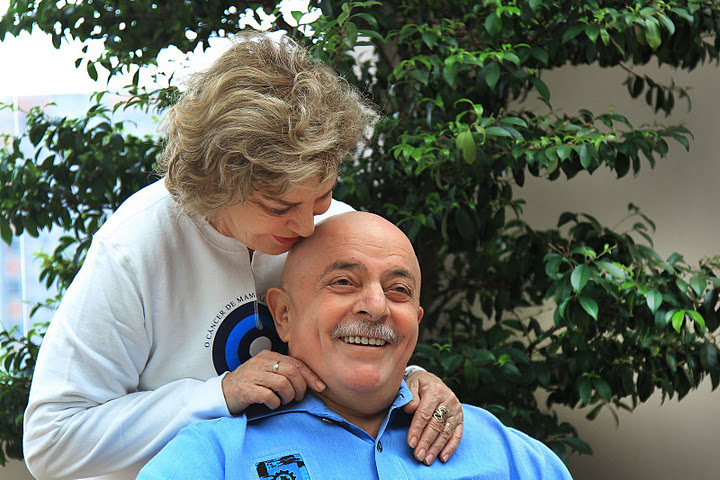
MARCH / 2012
Five months after the cancer diagnosis, Lula undergoes tests at the Sírio Libanês Hospital, which indicate a complete remission of the tumor.
“One thing I learned and that I can suggest is that the patient (…) has to have discipline. He has to follow the directions. It will not be fun, nothing will be pleasurable, it is all hard, but he has to know that the result of all that is he gets to live. And just by knowing that the result of being disciplined will ensure his right to live, any suffering is worth it.”
Cleared by his doctors, Lula works on the PT campaigns, and visits 12 capitals. The party obtains important victories, such as Luciano Cartaxo, in João Pessoa, and Elmano de Freitas, in Fortaleza, besides the celebrated election of Fernando Haddad, in São Paulo: a little known politician who was appointed by Lula, repeating the Dilma Rousseff phenomenon.
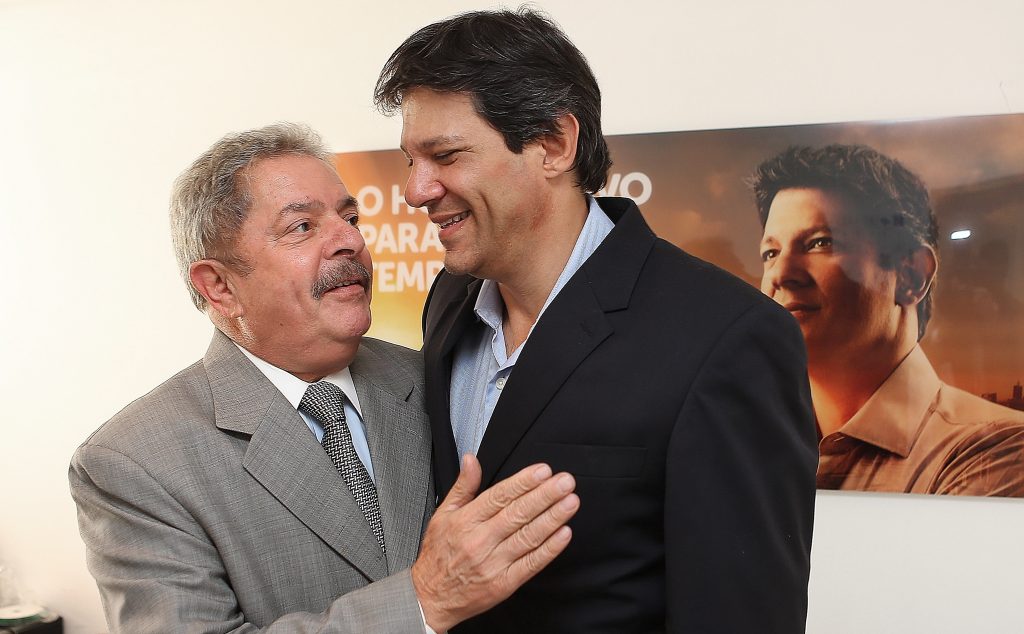
DECEMBER / 2012
The international “Fórum for Social Progress: growth to get out of crisis” conference takes place in Paris. Promoted by Instituto Lula in partnership with French Foundation Jean Jaurès, from the Socialist Party, its objective is to assemble economists and renowned international speakers to discuss strategies that would allow countries to overcome the international economic turbulence and, simultaneously, preserve jobs and guarantee development. President Dilma Rousseff and French president François Hollande come to the opening ceremony. A second round of discussions is scheduled for the next year in São Paulo.
MARCH / 2013
Lula published on The New York Times an article about the death of Venezuelan president Hugo Chávez. Negotiations start for Lula to collaborate monthly with the newspaper. On April 23rd, the contract is announced, and starting in June, Lula writes a monthly column, distributed by the NYT news agency, not necessarily through the print edition. In his first text, he would talk about the manifestations that took over the streets in Brazil after protests against bus fare increases.
“The concerns of the young people are not merely material. They want greater access to leisure and cultural activities. But, above all, they demand political institutions to be more clean and transparent, without the distortions of the current political and electoral system in Brazil, which recently has shown to be incapable of promoting reforms. The legitimacy of these demands cannot be denied.”
JUNE / 2013
“New unified approaches to eradicate hunger in Africa” is the title of the international meeting taking place in Addis Ababa, Ethiopia, promoted by the Lula Institute in partnership with the African Union Commission (AUC) and the Food and Agriculture Organization of the United Nations (FAO). The goal is to eradicate hunger from the continent, where 245 million people do not have enough to eat, until 2025.
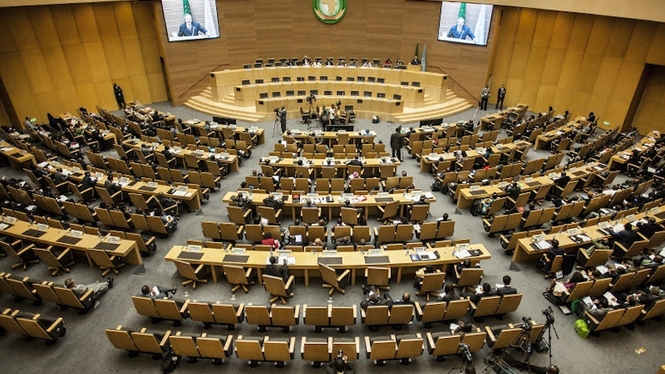
NOVEMBER / 2013
Lula is one of the 120 leaders from ten different nations assembled at the seminar “Development and Integration in Latin America”, in Santiago, Chile. The objective is to discuss the strengthening of the physical, economic, energetic and social relations among countries in the region. The seminar is organized by Instituto Lula in partnership with CEPAL (United Nations Economic Commission for Latin America and the Caribbean), the Inter-American Development Bank (IADB), and the Development Bank of Latin America (CAF). Over the year, Lula would visit several Latin American countries: Chile, Argentina, Cuba, Colombia, Ecuador, Mexico, Peru, Dominican Republic, Uruguay and Venezuela. The Lula Institute also keeps a working group titled Iniciativa América Latina, in parallel to the Iniciativa África.
Source: Instituto Lula / lula.com.br | Translated by Paulo Penteado.
